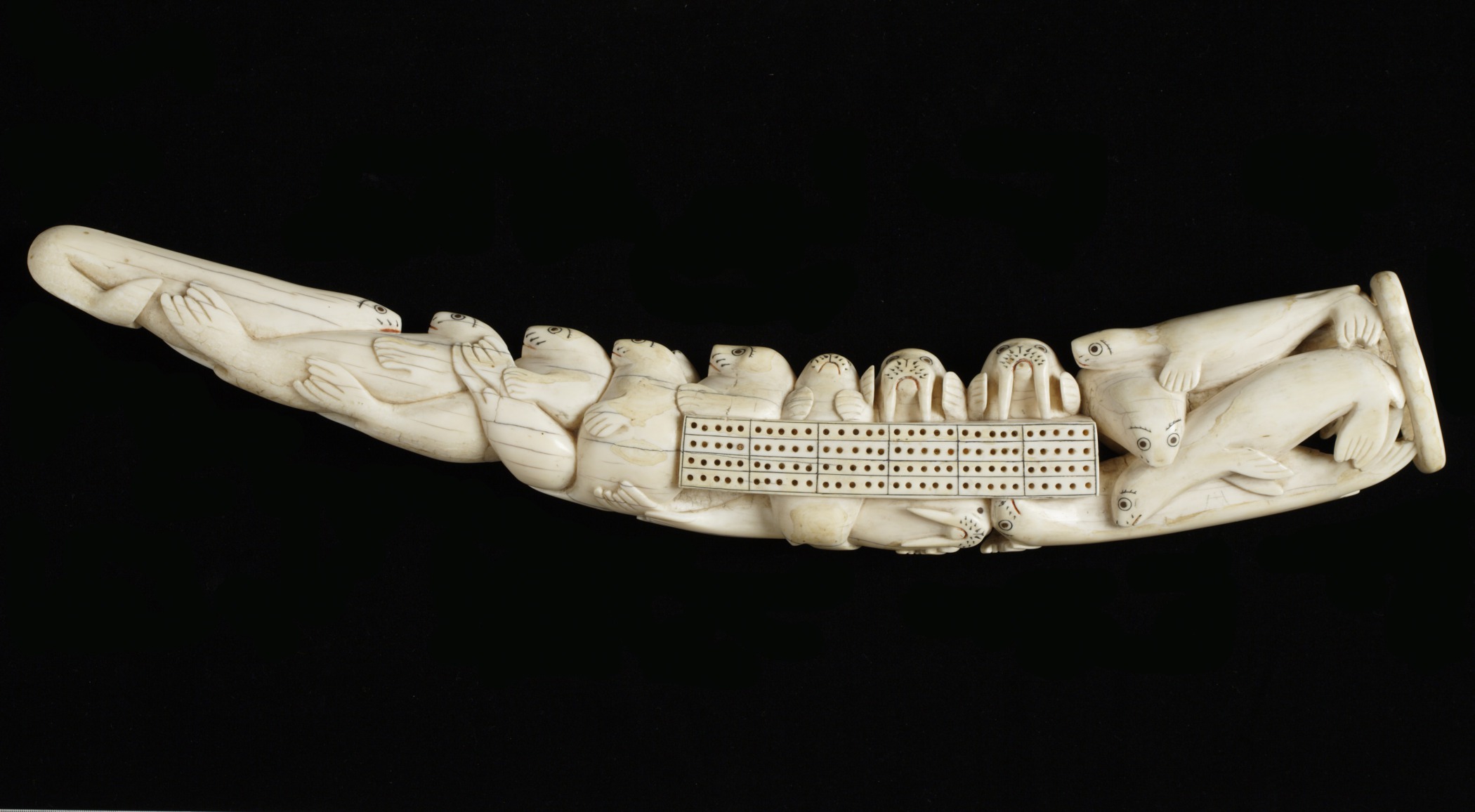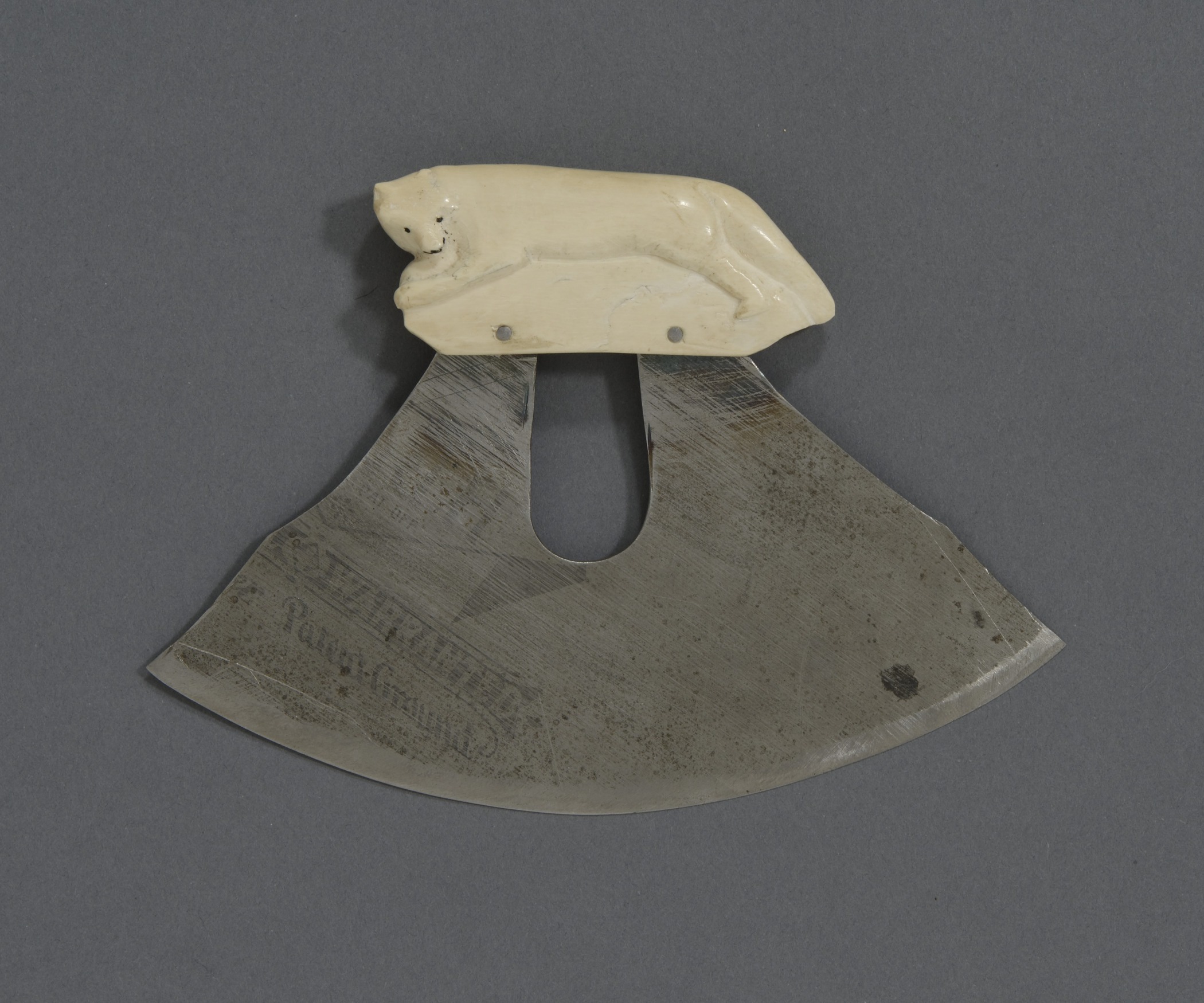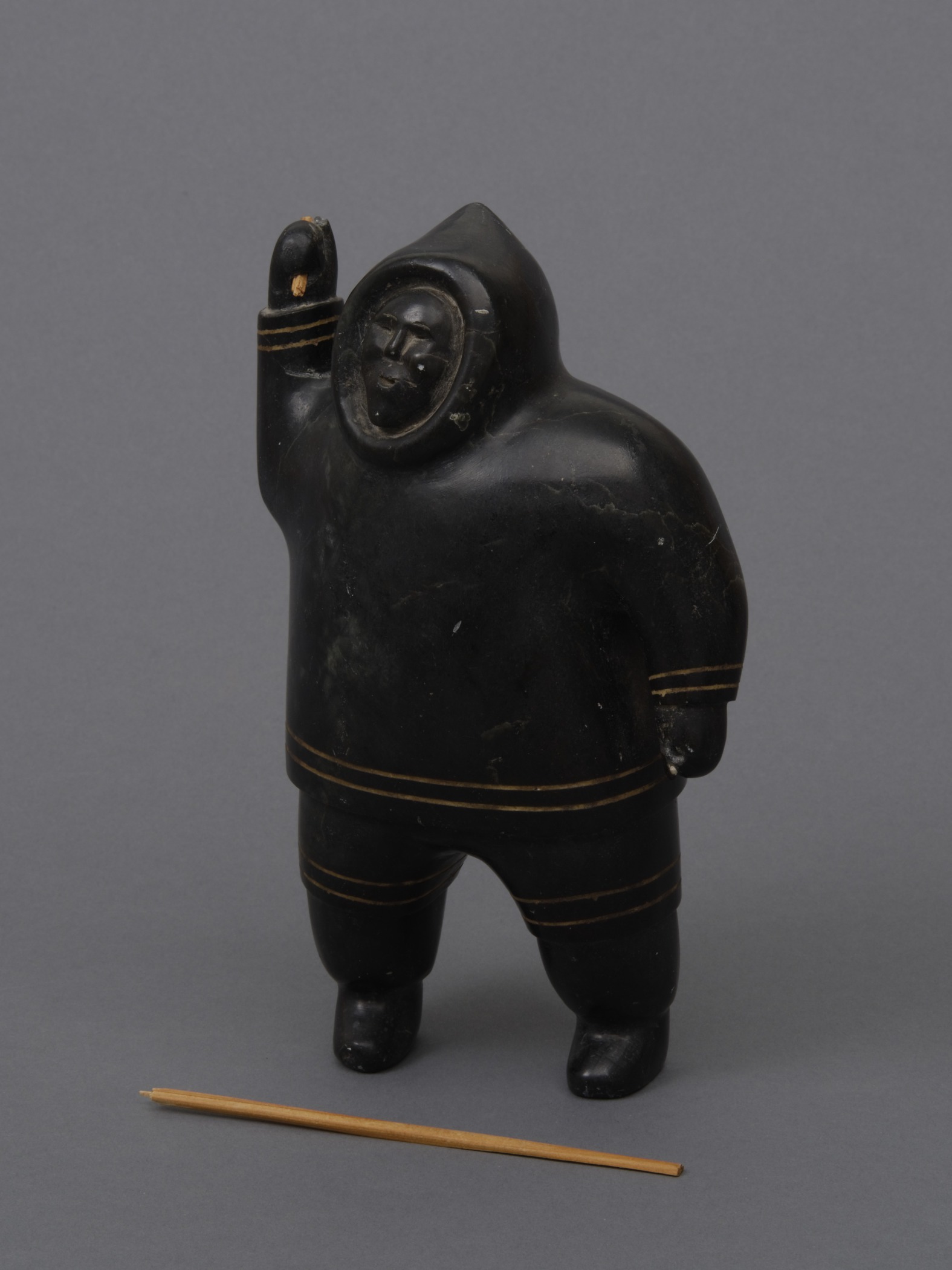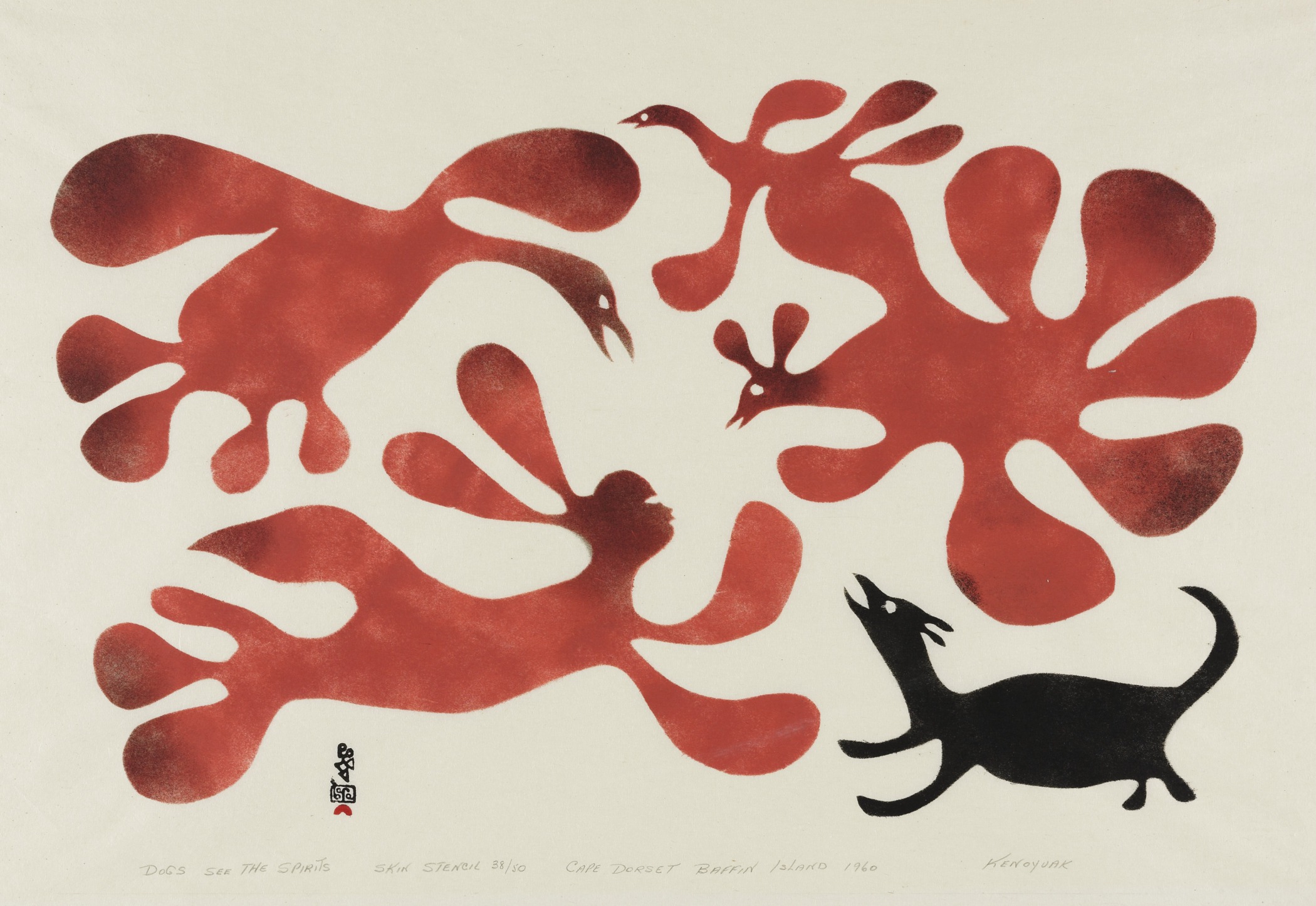James Kivetoruk Moses, American (Iñupiaq), 1902–1982
Ulu with engraving of a fox on the ivory handle, made for Sally Carrighar
- Collected 1948–57
- Metal and ivory
- 6 1/2 × 4 3/4 × 3/4 in.
Hood Museum of Art, Dartmouth College: Gift of Sally Carrighar; 166.43.16146
visibilityLook & DiscussAlthough largely self-sufficient, Arctic cultures were engaged with the cash economy from the time explorers, whalers, and missionaries appeared on their shores. In exchange for beaver and fox fur, indigenous people acquired guns, seed beads, needles and thread, flour, tea, sugar, and other items on which they came to depend.
This ulu, or woman’s knife, represents this history.
explore the object
Made for a visiting American naturalist, this ulu combines local materials and trade goods. Its walrus ivory handle represents a locally sourced material. The metal blade was acquired through trade. Pre-contact, Arctic people made ulus out of sharpened stone. Metal, however, is easier to shape and sharpen, and lasts longer. The Iñupiaq welcomed new materials or technologies that made things work better.
Designing tools and weapons with animal carvings showed appreciation and respect for the animals that had offered themselves as food and clothing. Hunters, who made the carvings, believed that showing respect in this way improved their chances of success.
In the early 19th century, many families dedicated their winters to fur trapping. In addition to trading the furs, they used fox-tail tendons for sewing, and fox fur as a trim for parkas. Although the fur trade collapsed in the the 20th century, fox trapping continues today. Fox furs are still used in making fur hoods for parkas and linings for gloves, and trapping serves as a means of maintaining traditional knowledge.




